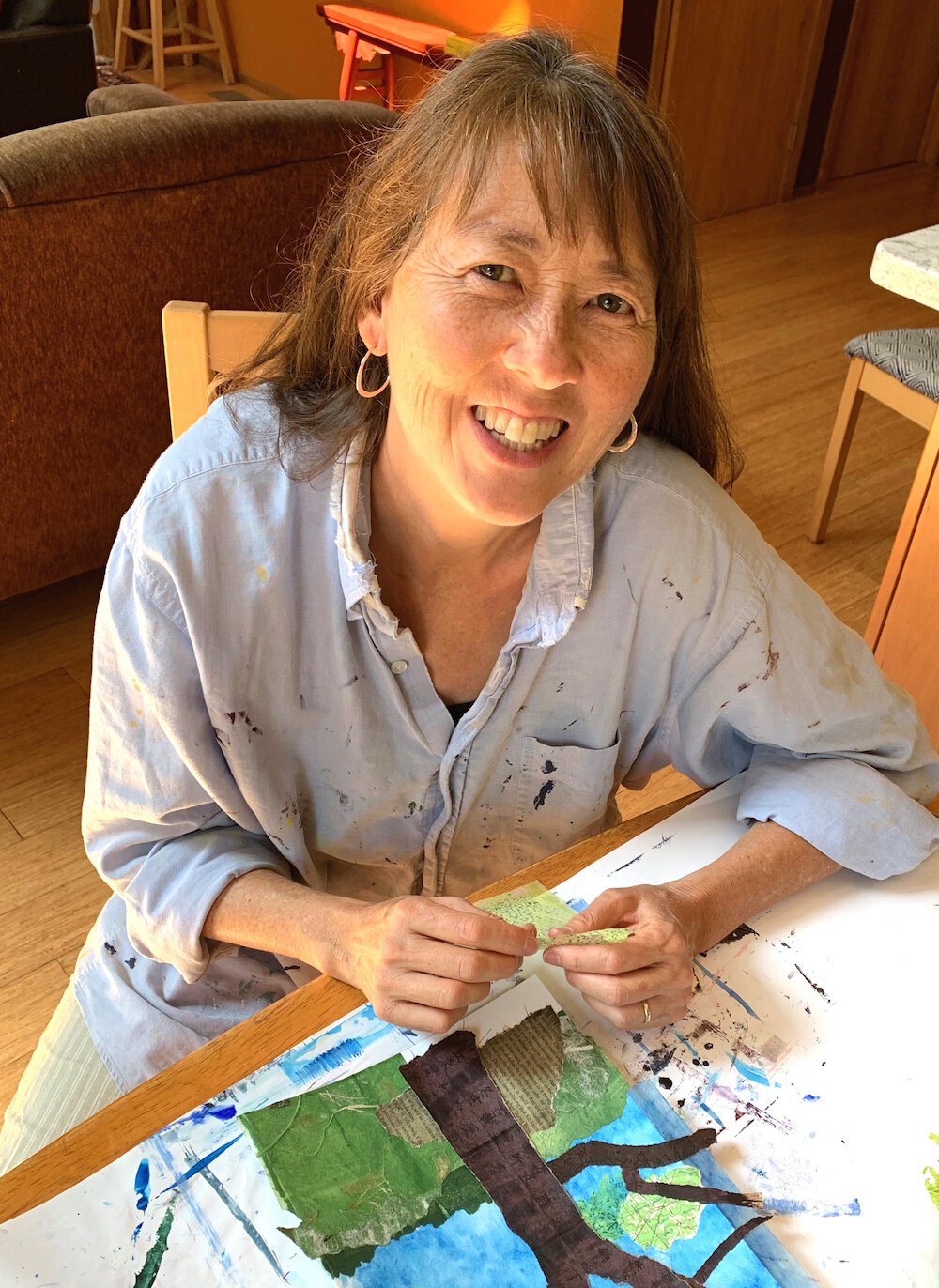This haiga by Annette Makino was published in Contemporary Haibun Online in December 2023, and appears in her 2024 calendar of art and haiku. © Annette Makino 2023
ANNETTE MAKINO, HAIKU SOCIETY OF AMERICA NEWSLETTER, DECEMBER 5, 2023
You probably know the satisfaction of writing a well-crafted haiku, when just the right words in the right order create something greater than the sum of its parts. Now imagine that feeling magnified by adding a visual dimension, opening up an extra avenue of creative expression. That is the reward of creating haiga.
You will also find that haiga are more accessible to your cousins, colleagues or others who aren’t particularly interested in haiku. An arresting image combined with a few well-chosen lines of haiku is easy to digest without any knowledge of Japanese poetry. For many years I have published a calendar of my haiga. Sold mainly in grocery stores, bookstores and plant nurseries in my community, these reach hundreds of people each year who have no special connection to haiku, but who find beauty and meaning in the haiga.
“But wait,” I hear you objecting, “I don’t have an artistic bone in my body!” Fear not. In the Japanese tradition, haiga did not require any particular artistic skill. Though there were certainly practitioners who were great artists, like Buson, most haiga images were very modest. The creator’s sincerity and individual expression were key.
Also, with today’s availability of digital photography and photo editing apps, creating variations of haiga is more accessible than ever. (But note the hazards of photo-haiga, below.)
As haiku poets, we have learned that, typically, a key element of an effective haiku is to “mind the gap”—to create some distance between the one-line fragment and the two-line phrase of each poem, enabling readers to make connections themselves. (Of course, some powerful poems break this general guideline.)
The same holds true in the juxtaposition of the image and words in a haiga. Stephen Addiss has written, “In a fine haiga, the poem does not just explain the painting, nor does the painting merely illustrate the poem. Instead, they add layers of meaning to each other.”
However, in my experience, this is easier said than done. If the haiku doesn’t include a strong visual element, it is fairly simple to create some disjunction between the art and text. But if your haiku contains a visual image, as many effective poems do, and if you are using a representational artistic style, it can be hard to find the right distance between the poem and the art. On the one hand, you don’t want to make the connection too obvious; on the other, you don’t want to confound or disengage the viewer.
For instance, in a haiku about a fledgling learning to fly, pictures of birds immediately come to mind. But some other potential visual subjects that offer related but less overt connections might include feathers, fields or clouds. Even paper airplanes!
Correspondingly, if your artistic style is more abstract, it’s easier to create contrast between the text and art even if the haiku features a visual image. For instance, traditional Japanese haiga made of a few semi-abstract brushstrokes allow plenty of space for the viewer to fill in.
I find that many haiga using photos (known as shahai in Japanese) leave me cold; a photo can contain so much visual information that it closes down interpretations of the piece as a whole. But photo-based haiga can be successful if they use more impressionistic images like simple landscapes or extreme closeups. Photos that are manipulated with filters to become somewhat abstracted can also be very effective. And a more detailed photo can still work if the poem shifts away from it enough.
There is a lot involved in crafting haiga; I’ve only touched the surface here. But in the end, I encourage you to create what you want to create. Guidelines can be helpful, but don’t let them limit you. It’s all about the joy of expressing yourself!
•
See the gallery of Annette’s haiga.
See her 2024 haiga calendar.
See an essay on linking in haiga by Michael Dylan Welch.











